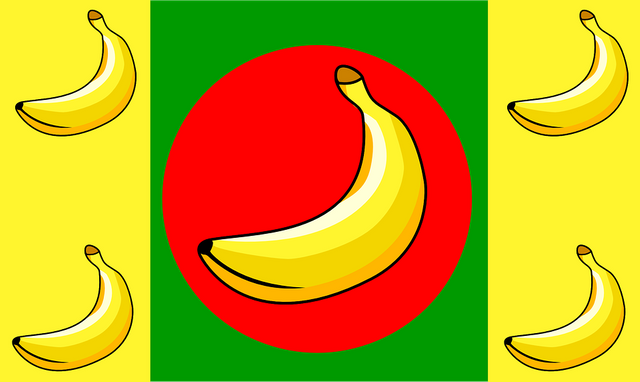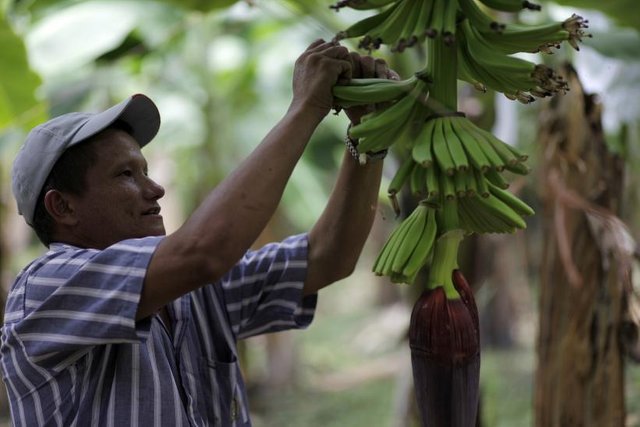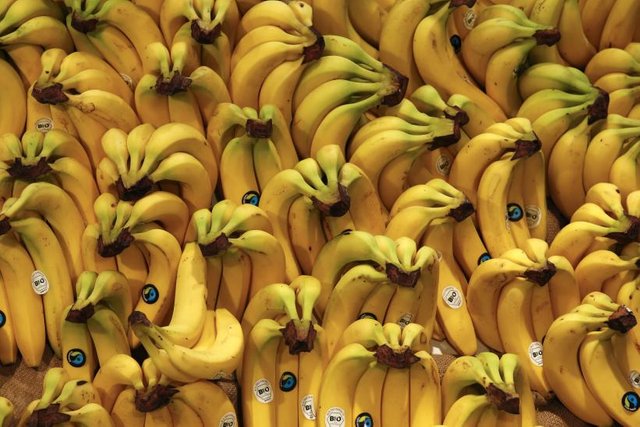What Makes a Banana Republic?

In 1904, William Sydney Porter published a book of short stories, Cabbages and Kings, under the pseudonym “O. Henry.” Porter's book depicted the nation of Anchuria, a fictionalized version of Honduras inspired by the author's travels in the region. Porter describes Anchuria as a “banana republic,” meaning that the nation's economy, infrastructure, and culture revolved around the mass-production of bananas for export to other nations. The term carries derogatory implications, however, suggesting that the government and citizens of a “banana republic” are unsophisticated and subjugated to the whim of fruit-companies and market demands. The term seems to suggest that the citizens are comparable to the land used for cultivation, in that they are passive, acted upon, and used for the benefit of outside forces, a notion which John Soluri explicitly rejects in the first chapter of his book Banana Cultures. Despite describing the term as a “tragically powerful” metaphor, Soluri contends that describing Honduras as a “banana republic” allows us to gloss over the true forces at work. He argues that the history of Honduras was not shaped by its identity as a banana republic, but rather, that the nation's identity as a banana republic was a by-product of its history. Soluri states that he is “less interested in arguing for the primacy of cultural or biological processes than in demonstrating their historical entanglement” (Soluri 5). Put another way, the notion of “outside” forces imposing themselves on a “banana republic” is flawed, because there is a reciprocal influence in every action. Every factor in world history is intimately intertwined, and Soluri stresses heavily that the inhabitants of Honduras were actors on a historical stage, not merely chess pieces to be moved about by fruit companies. However, despite the active role of Honduran merchants and laborers in shaping the history of their nation, it is difficult to deny that the term “banana republic”-- at least in terms of our initial definition-- provides a fitting label for Honduras in modern history. International banana trade began to dominate the economy and culture of Honduras as soon as it began. Fruit companies employed more workers than any other entity in the nation, and they were also responsible for constructing the docks, roads, and railroad networks that allowed for the transportation of Honduran products, people, and profits.
In defending the agency of the inhabitants of so-called “banana republics,” Soluri writes, “LeGrand and several other scholars have successfully challenged images of omnipotent U.S. Banana companies manipulating 'comprador' elites and hapless peasants by showing how national banana growers in Colombia, merchants in Honduras, labor union activists in Guatemala, West-Indian migrants in Costa Rica, and worker-cultivators in Ecuador challenged and at times redirected policies pursued by government authorities and fruit company managers” (Soluri 4). While Soluri is vindicated in his defense of the workers' agency, his argument does not undermine the fact that life in these nations, particularly in Honduras, revolved around producing bananas. The fruit companies and their government companions were certainly not omnipotent, but they were undoubtedly the largest and most powerful influence in the region of Honduras for much of the 20th century. In regards to the notion that the Honduran landscape and its inhabitants were “essentially passive, acted upon,” Soluri challenges the assumption “by exploring the interactions among diverse and often divided people, not-so-diverse banana plants, and persistent yet unpredictable pathogens that formed and reformed tropical landscapes and livelihoods in export banana zones” (Soluri 5). However, merely demonstrating the active role of the indigenous population and the “historical entanglement” of physical factors does little to refute Honduras' identity as a banana republic. While fruit companies and government officials may not have been absolute political puppet-masters, the banana could still be compared to a massive star, pulling politicians, citizens, and foreign companies into its orbit.

The banana was a staple of the Honduran diet long before the days of its international export. In the sense that the banana was already an integral part of Honduran culture, it might be appropriate, albeit pejorative, to describe 19th century Honduras as a banana republic. The banana did not yet dominate the economy and politics of the nation, but it was certainly a critical factor in the life of any Honduran. Granted, if we allow this to suffice as qualifications for a “banana republic,” we could just as soon call the modern United States an “automobile republic” or a “fast-food republic” and be equally justified.
The industrial revolution saw the introduction of the steam-powered ship, which allowed people to cross vast ocean distances in a fraction of the time taken by traditional wind and sail vessels. For the first time in history, perishable produce could be transported from Central America to the United States without spoiling. As early as the 1870's, Honduran banana growers started exporting their crops to the United States through the port of New Orleans (Soluri 9). In addition to its agreeable taste and nutritional value, the banana was seen as an exotic novelty. These three factors made it an extremely marketable product. Enter the fruit companies. United Fruit, Standard Fruit, and the Cuyamel Fruit company each operated in Honduras between 1900 and 1930 (Soluri 10). Soluri illustrates that, on one hand, the presence of three major fruit companies is a testament to Honduras' identity as a banana republic. On the other hand, the presence of three separate companies stands in sharp contrast to the monopoly held by United Fruit in both Guatemala and Costa Rica. With three competing companies, politicians and local growers in Honduras were provided with significantly more leverage than their Guatemalan or Costa Rican counterparts (Soluri 10).
Initially, the presence of the foreign fruit companies was not particularly detrimental to the indigenous people. Local growers could expect significant profits in their first year of cultivation in spite of the start-up costs. William Burchard estimated that in 1880, a local grower could acquire a 4-hectare plot of land with 3,000 banana plants for $250. The biology of the seedless Gros Michel banana allowed it to self-propagate without being replanted year after year. Under favorable conditions, annual returns could be anywhere from $1,000 to over $3,000 (Soluri 20). Rather than impede these local growers, the arrival of the fruit companies initially fostered their development. Newly constructed railroads allowed growers to cultivate previously-untouched land, and sell their goods to consumers that otherwise would have been too far away. An 1899 government survey showed that there were now 1,032 separate banana farms in Honduras covering roughly 10,300 hectares of land. With around 3,000 banana plants per every 4-hectare tract by Burchard's estimate, it is mind-boggling how many bananas were already being produced before the turn of the century.

Over the years, the situation became less and less favorable for local growers. If bananas are grown continuously on the same tract of land, they will gradually deplete the soil of its nutrients. After about the thirty years, the soil becomes practically useless. Bananas will still grow, but not in an economically viable manner. For the big-time fruit companies, this wasn't an issue, because they needed only to relocate to new lands. For local growers, whose budgets and profit margins were considerably lower, moving an operation was far more inconvenient and risky. What's more, buyers held considerably more leverage than growers in the banana trade. Many growers were instructed to leave their product by the railways, and they would receive payment upon the arrival of the bananas in La Ceiba or other port cities (Soluri 28). This left the growers at the mercy of the buyers. If the bananas were spoiled, the growers ate the cost. The situation also seems ripe for swindling on the buyers/shippers part, but clearly they would risk losing business if they reneged on a payment. The immense demand for bananas kept the wheels of trade turning.
The arrival of Panama disease in Honduras contributed to the rapid rate at which fruit companies bought up land. The majority of plantations were growing genetically-identical Gros Michel bananas. When Panama disease arrived, everyone's bananas were affected. Alternative bananas, such as the Cavendish, were undesirable in the United States market due to their unfamiliar texture and uneven ripening (Soluri 55). The seedless nature of the Gros Michel banana also made it next to impossible to engineer an useful hybrid banana. The most cost-efficient way of combating wilted, disease-ridden crops was to simply run away-- move on to greener pastures, so to speak (Soluri 56). Local growers soon found themselves out of the loop. Even if they had the capitol to purchase new lands, the fruit companies were buying it up so fast that there was scarcely any land to purchase. Many former private farm-owners found themselves joining the ranks of the plantation laborers just to make ends meet. The arrival of Sigatoka disease was even more detrimental to the indigenous population. The disease could be combated by the application of “Bordeaux” spray, a copper sulphate concoction, but the necessary technology was most readily available to the foreign fruit companies. Plantation workers found themselves working as veneneros, poisoners, working in groups to spray down each plant with the bluish copper sulphate. Many of the workers reported bluish green skin, tuberculosis-like symptoms, and severe respiratory problems. Without any other job opportunities, the veneneros had to pick their poison: Bordeaux spray, or unemployment and starvation. Eventually, Bordeaux spray was replaced by Dithane spray, which was more effective in preventing the spread of Sigatoka and considerably more cost-efficient. Bordeaux spray required applications followed by water-cleansing, followed by more applications and more water-cleansings, all of which required the employment of hundreds of workers for relatively small areas. Dithane spray, however, required less frequent application, no water-cleansing, and could be applied arbitrarily via airplane crop-dusting. Thousands of Hondurans lost their jobs as a result of the transition (Soluri 199).

The international banana trade dominated the Honduran economy, and thus it was inevitable that it would eventually become a primary influence in politics as well. Aside from the fluctuations in various land permits and tax exemptions, the fruit companies occasionally intervened directly in the Honduran government. In 1907, Nicaraguan forces ousted President Bonilla from power in Honduras. Miguel Dávila temporarily assumed his position. In 1910, ex-president Bonilla boarded a ship belonging to Samuel Zemurray, head of the Cuyamel Fruit Company (Soluri 41). They arrived in Honduras with a small group of mercenaries and attempted a coup. The United States government prevented the successful completion of the coup, but Zemurray and Bonilla both got what they wanted. Zemurray wanted to see the end of Dávila's treaty with the U.S. which threatened to end his duty exemptions. Bonilla wanted to be back in power. The private invasion precipitated Bonilla's victory in the 1911 Honduran presidential elections, and in doing so, maintained Zemurray's largely tax-free trading arrangement (Soluri 42).
Clearly, Honduran history is a result of an immense, perhaps infinite, number of factors. However, it is also clear that many of these roads lead inevitably back to the banana. The banana provided sustenance and employment for much of the population of Honduras, and it drew in the fruit companies which would eventually come to hold sway over the nation's economy and politics. While labor-unions and Honduran politicians were occasionally effective in pushing back against the influence of Cuyamel, United, and Standard Fruit, the banana remained the symbol of their struggle and of their nation. Thus, I believe as John Soluri does, that “banana republic” is a tragically powerful metaphor for the Republic of Honduras in the 20th century.
Book referenced:
Soluri, John. Banana Cultures: Agriculture, Consumption, and Environmental Change in Honduras and the United States. Austin: University of Texas Press, 2005. Print.
Image at top: